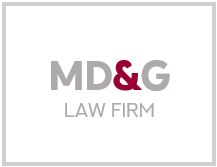Our healthcare lawyers help clients meet the challenges they face in today’s rapidly changing enforcement, regulatory, and scientific environments. McAllister Davis & Goldstein has deep substantive healthcare law expertise, unparalleled investigative experience, and a willingness and ability to try these cases to a jury if necessary. These skills have been brought to bear to achieve an extraordinary record of successful outcomes for our health care clients.
Our Clients
The comprehensive scope of the practice is unique: from helping to establish the start-ups developing the latest breakthrough drugs and medical devices, to defending pharmaceutical manufacturers in precedent-setting legal challenges, to counseling on the full spectrum of regulatory matters that these diverse entities face.
Many of our attorneys are scientists or engineers with degrees in relevant fields; our litigators hold degrees in physics, chemistry, pharmacology, molecular biology, biochemistry, and chemical engineering.
Transaction Expertise
The multi-disciplinary approach enables us to quickly assimilate our clients’ regulatory, intellectual property and commercial goals, identify potential issues and develop creative and novel approaches to maximize value for our clients.
We advise clients throughout a product’s life cycle, going beyond the traditional legal services offered by other firms to facilitate efficient and effective research and development, ensure successful launch and commercialization, and maximize the product’s franchise.
Whether guiding regulatory compliance, building strategic patent portfolios or prosecuting, defending and enforcing quality patents that consistently withstand challenges, we advise and represent life sciences leaders, healthcare companies and emerging innovators.
Our clients, spanning all industry sectors and ranging from startup ventures to multinational corporations and trade associations, trust us with their most challenging business problems.
They know that they can rely on McAllister Davis & Goldstein for practical, efficient solutions rooted in a sophisticated knowledge of their business that only comes from deep immersion in the industry and decades of dedicated service.
Our broad background and depth of experience ensures that when clients come upon a problem that they have not seen before or anticipated, chances are that we have.
Focus Areas include:
- Healthcare: Our diverse client group includes hospitals, healthcare systems, medical centers, laboratories and others, whom we advise on clinical business.
- Biotechnology & Pharmaceuticals: An international biotech and pharmaceuticals team, patent agents and science advisers address the inherent challenges of clients’ collective mission to cure disease and improve people’s health as well as the regulations that govern these pursuits in a wide range of areas.
- Medical Device: In our comprehensive counsel to medical device startups, large manufacturers, research institutions, universities and others, we work with clients whose technologies span from cardiovascular and optics to renal care, lasers, surgical tools and more.
Healthcare Matters
Clients benefit from McAllister Davis & Goldstein’s deep experience in health care law, and our intimate knowledge of our clients’ industries, which position the firm to preempt and resolve legal issues across the full range of relevant practices. Our success in the courtroom in healthcare matters speaks for itself.
















